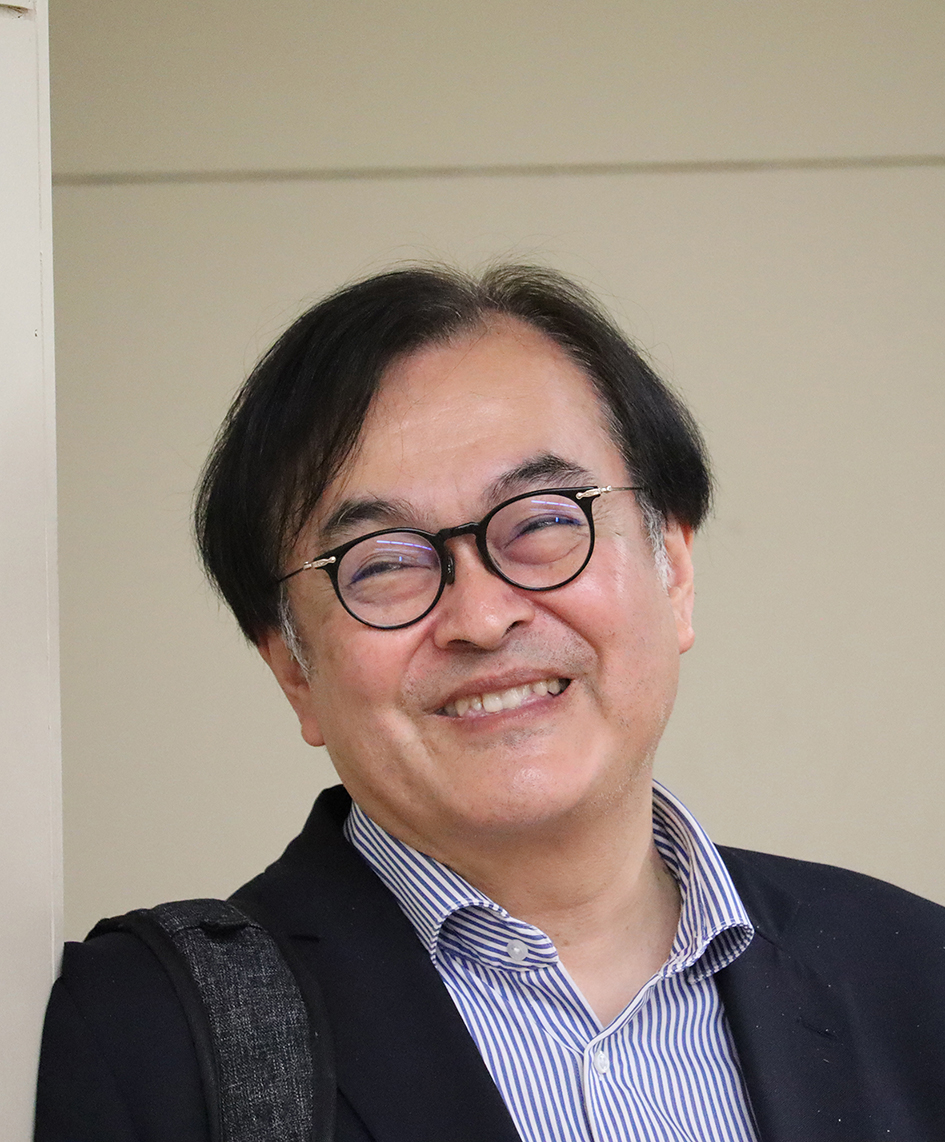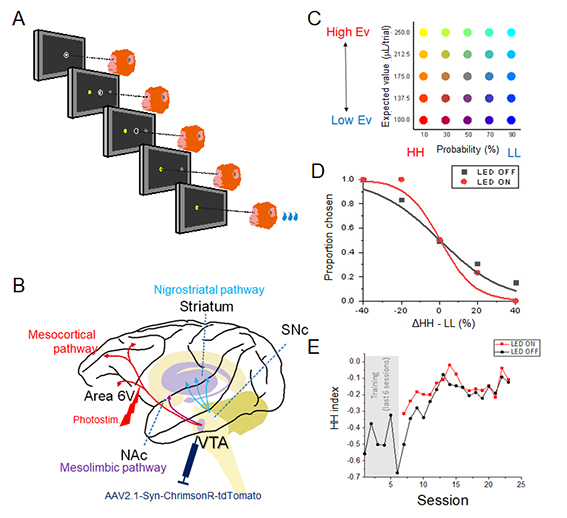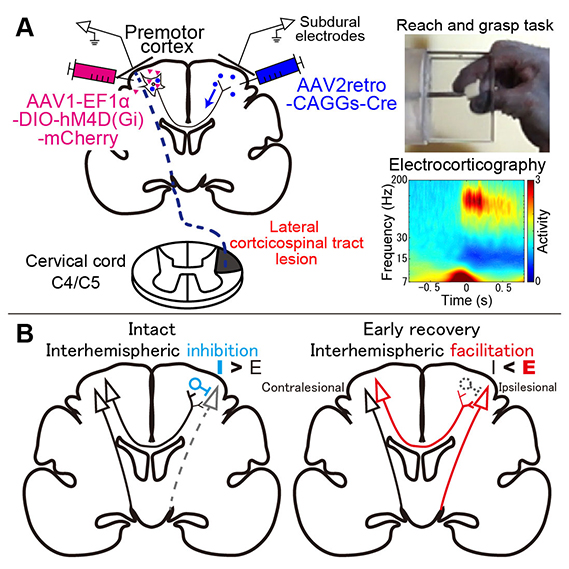
M.D., Ph.D. Professor Tadashi Isa
Our group double as the Evolutionary Systems Neuroscience Group of the Institute for the Advanced Study of Human Biology (WPI-ASHBi). The group aims at elucidating the neural circuit mechanisms for control of dexterous motor actions and their recovery after the neural injuries and cognitive functions such as decision making and motivation, emotion, attention, associative learning and consciousness and their disorders. We are conducting the researches in various animal models for this goal, applying multidisciplinary methods, such as electrophysiology, psychophysics, neuroimaging, transgenic animals, viral vectors, and computational modeling.
Research and Education
Sensory, motor, and cognitive functions are regulated by complex, multi-hierarchical neural circuits in the brain. To understand brain function at the systems level, it is essential to develop hypotheses based on the structure of these circuits and to demonstrate their causal contributions by perturbing key elements and analyzing the effects on cognition and behavior. Recently, in the field of neuroscience, techniques like optogenetics and chemogenetics have made it possible to manipulate specific cell types and pathways, at least in model organisms such as mice, allowing us to demonstrate the functions of these elements. However, selectively manipulating particular neural circuits in nonhuman primates—whose larger brains pose significant challenges—remains difficult. Despite these challenges, we have succeeded in selectively manipulating specific circuits in the macaque brain using viral vectors combined with optogenetics and chemogenetics. This has allowed us to uncover key circuit mechanisms involved in flexible decision-making and motor function recovery. Moving forward, we aim to extend our research to elucidate the pathophysiology and develop therapeutic strategies for intractable neuropsychiatric disorders.
 (Figure 1) When a monkey is making a decision between a high-risk high-return (HH) option and a low-risk low-return (LL) option (A, C), if we activate the dopaminergic pathway from the ventral tegmental area (VTA) to the frontal cortex area 6V using optogenetic techniques (B), the monkey’s preference for the HH option increases during that trial (D). Moreover, with repeated stimulation, this effect accumulates, leading to a long-term increase in the monkey’s preference for the HH option (E). (Sasaki et al., Science, 2024)
(Figure 1) When a monkey is making a decision between a high-risk high-return (HH) option and a low-risk low-return (LL) option (A, C), if we activate the dopaminergic pathway from the ventral tegmental area (VTA) to the frontal cortex area 6V using optogenetic techniques (B), the monkey’s preference for the HH option increases during that trial (D). Moreover, with repeated stimulation, this effect accumulates, leading to a long-term increase in the monkey’s preference for the HH option (E). (Sasaki et al., Science, 2024)
 (Figure 2) During the recovery process after a spinal cord injury, the interhemispheric pathway from the premotor cortex on the side opposite to the injury to the premotor cortex on the same side as the injury changes from being inhibitory to facilitatory. This shift promotes the activity of the motor cortex on the same side as the injury and contributes to the recovery of motor function. (Mitsuhashi et al., Nature Communications, 2024)
(Figure 2) During the recovery process after a spinal cord injury, the interhemispheric pathway from the premotor cortex on the side opposite to the injury to the premotor cortex on the same side as the injury changes from being inhibitory to facilitatory. This shift promotes the activity of the motor cortex on the same side as the injury and contributes to the recovery of motor function. (Mitsuhashi et al., Nature Communications, 2024)
Recent Publications
- Sasaki R, Ohta Y, Onoe H, Yamaguchi R, Miyamoto T, Tokuda T. Tamaki Y, Isa K, Takahashi J, Kobayashi K, Ohta J, Isa T (2024) Balancing risk-return decisions by manipulating the mesofrontal circuits in primates. Science, 383:55-61.
- Mitsuhashi M, Yamaguchi R, Kawasaki T, Ueno S, Sun Y, Isa K, Takahashi J, Kobayashi K, Onoe H, Takahashi R, Isa T (2024) Stage-dependent role of interhemispheric pathway for motor recovery in primates. Nature Communications, 15(1):6762.
- Vancraeyenest P, Arsenault JT, Li X, Zhu Q, Kobayashi K, Isa K, Isa T, Vanduffel W (2020) Selective mesoaccumbal pathway inactivation affects motivation but not reinforcement-based learning in macaques. Neuron, 108:568-581.
- Kinoshita M, Kato R, Isa K, Kobayashi K, Kobayashi K, Onoe H, Isa T (2019) Dissecting the circuit for blindsight to reveal the critical role of the pulvinar and superior colliculus. Nature Communications, 10(1):135.
- Sawada M, Kato K, Kunieda T, Mikuni N, Miyamoto S, Onoe H, Isa T, Nishimura Y (2015) Function of nucleus accumbens in motor control during recovery after spinal cord injury. Science, 350: 98-101.
Laboratory
Professor: Tadashi Isa, M.D. & Ph.D.
(Phone; 075-753-4351, E-mail; isa.tadashi.7u(at)kyoto-u.ac.jp)
Program-Specific Associate Professor: Kinoshita Masaharu, Ph.D.
(Phone; 075-753-4356, E-mail; kinoshita.masaharu.6i(at)kyoto-u.ac.jp)
Junior Associate Professor: Takayasu Higo, Ph.D.
(Phone; 075-753-4353, E-mail; higo.takayasu.8s(at)kyoto-u.ac.jp)
Program-Specific Junior Associate Professor (ASHBi): Kenichiro Miura, Ph.D.
(Phone; 075-753-4356, E-mail; miura.kenichiro.2x(at)kyoto-u.ac.jp)
Assistant Professor: Reona Yamaguchi, Ph.D.
(Phone; 075-753-4690, E-mail; yamaguchi.reona.3e(at)kyoto-u.ac.jp)
Assistant Professor: Chih-Yang Chen, Ph.D.
(Phone; 075-753-4356, E-mail; chen.chihyang.3a(at)gmail.com)
Assistant Professor(Medical Education center): Richard Veale, Ph.D.
(Phone; 075-753-4353, E-mail; veale.richard.7c(at)kyoto-u.ac.jp)
Program-Specific Assistant Professor: Masahiro Mitsuhashi, M.D. & Ph.D.
(Phone; 075-753-4690, E-mail; mitsuhashi.masahiro.5z(at)kyoto-u.ac.jp)
